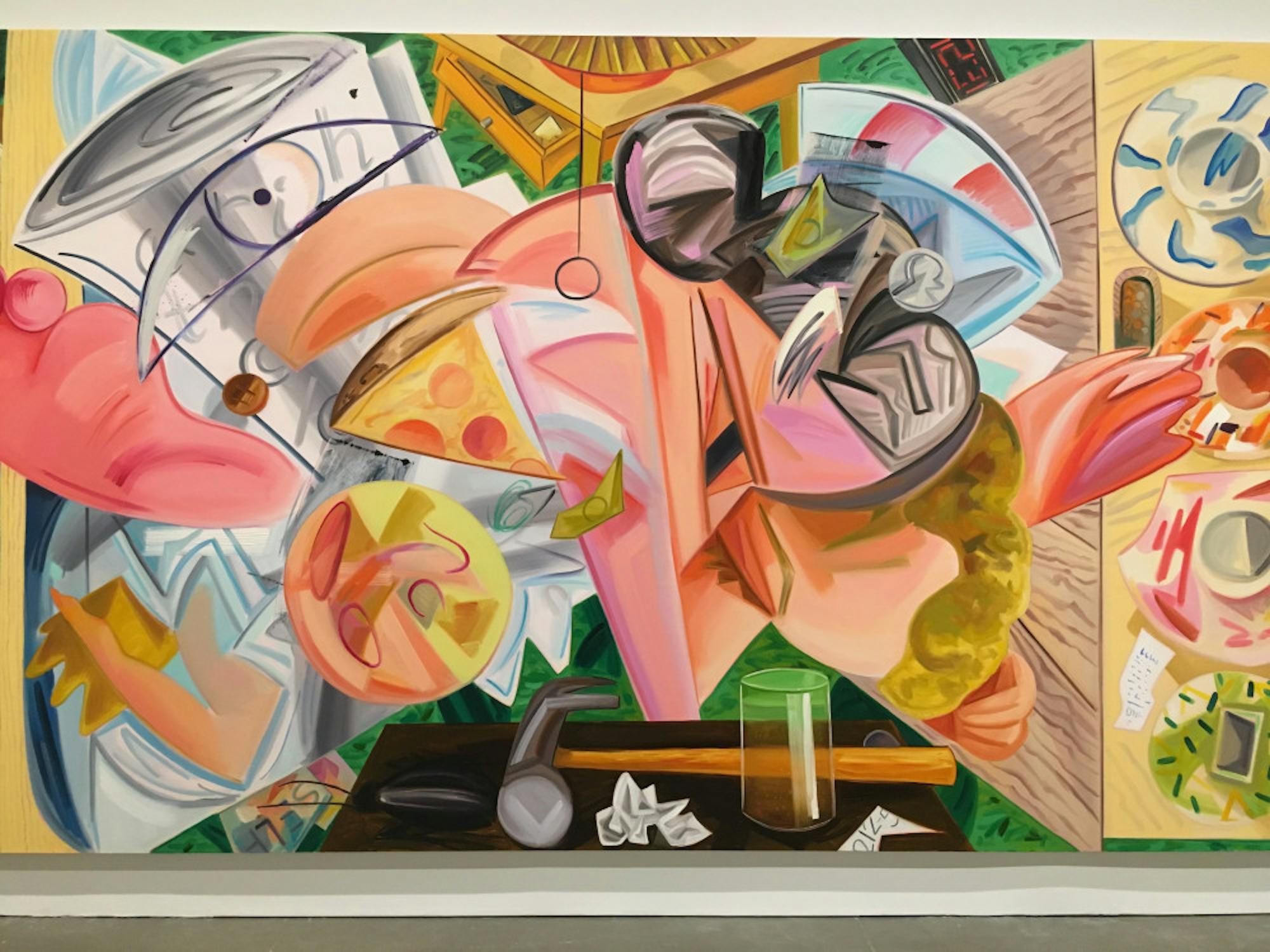After controversy surrounding her work “Open Casket” (2016) led to heated protests at the Whitney Biennial last March, Dana Schutz became one of the most conspicuous figures in the contemporary art world. The Institute of Contemporary Art (ICA) of Boston has also drawn support and protest from local artists and activists since unveiling a retrospective of Schutz’s work on July 26. The exhibition, which runs until Nov. 26, features numerous paintings that exemplify Schutz’s style, discernible in the vibrant, quasi-expressionist colors and the cubist shapes.
The galleries at the ICA today bear no visible sign of the storm that has surrounded Schutz and her work in the past months. The first room of the exhibition initially presents viewers with a very large piece by the American artist. “Shaking Out the Bed” (2015) portrays an intimate scene of two lovers at the moment of their awakening. The focus of the painting, however, appears to be the chaos surrounding the couple. A slice of old pizza, some spare change and a cup of water all manifest domesticity, interrupted by an abrupt alarm clock going off in the background.
This familiar picture clashes with the colossal size of this work, as frames of that size were traditionally used for nineteenth-century European paintings depicting mythological anecdotes. The bright and varied color palette also produces a sense of uneasiness as opposite hues clash, although it inevitably draw the viewer to the work itself.
The influence Cubism had on Schutz’s work is most evident in “Slow Motion Shower” (2015), which depicts a woman bather in a shower. The piece echoes the feeling of uneasiness in “Shaking out the Bed," as it shows this female figure contorting herself, bringing her hands to her eyes. In this scene, Schutz communicates the blinding, isolating feeling of being behind a shower curtain. What is more notable about the artwork, however, is the number of limbs visible -- four. The artist decomposes the female figure and looks at each part of the woman’s body diachronically, referencing Marcel Duchamp’s “Nude Descending a Staircase, No. 2” (1912), one of the most iconic examples of analytic Cubism.
The way Schutz employs elements from past artistic movements and references textbook-artworks is especially interesting because of the new connotations her works acquire in the process. In the case of “Big Wave” (2016), for instance, viewers are once again presented with a scene that could very well be taken from a painting Picasso could have made on a day when he was in a very good mood, hypothetically speaking. The shapes are very geometric and of clear Cubist inspiration, and Schutz appears to be representing time on the flatness of the canvas. She uses this Cubist language, however, to evoke uneasiness in the viewer at the sight of an impending disaster who is instantly reminded of stories of natural disasters that have been in the news in the past weeks. Although the reading from the standpoint of climate change is arguably the most direct one, some critics have identified the wave in this painting as a visual metaphor for the political climate of the past few years in the United States.
The retrospective on Dana Schutz currently on show at the ICA is qualitatively impressive. It displays several renowned pieces by the American artist, who has contributed to the resurgence of the medium of painting in the contemporary art world. The pieces are intellectually stimulating and thought-provoking, as well as visually appealing, and the wall text is clear and accessible to art-world outsiders. It is regrettable, though, that the museum makes no mention of the debate that has split many artists and critics over whether a white woman like Schutz is in the right to depict the suffering of a black person such as Emmett Till in her works. Regardless of where the ICA stands on this particular issue, it is important for the museum to at least acknowledge the controversy and give visitors context on Schutz’s artistic production.
Dana Schutz retrospective lives up to the artist's recent success despite notable absence

One of Dana Schutz's paintings currently exhibited at the Institute of Contemporary Art (ICA) of Boston.
Summary
Although the Dana Schutz retrospective at the ICA fails to address the controversy around the artist and contextualize her work, the show is a successful mix of references to traditional art history and commentaries on contemporary political issues.
4.5 Stars





